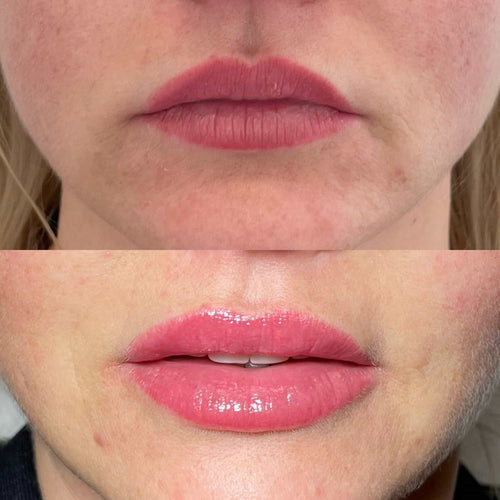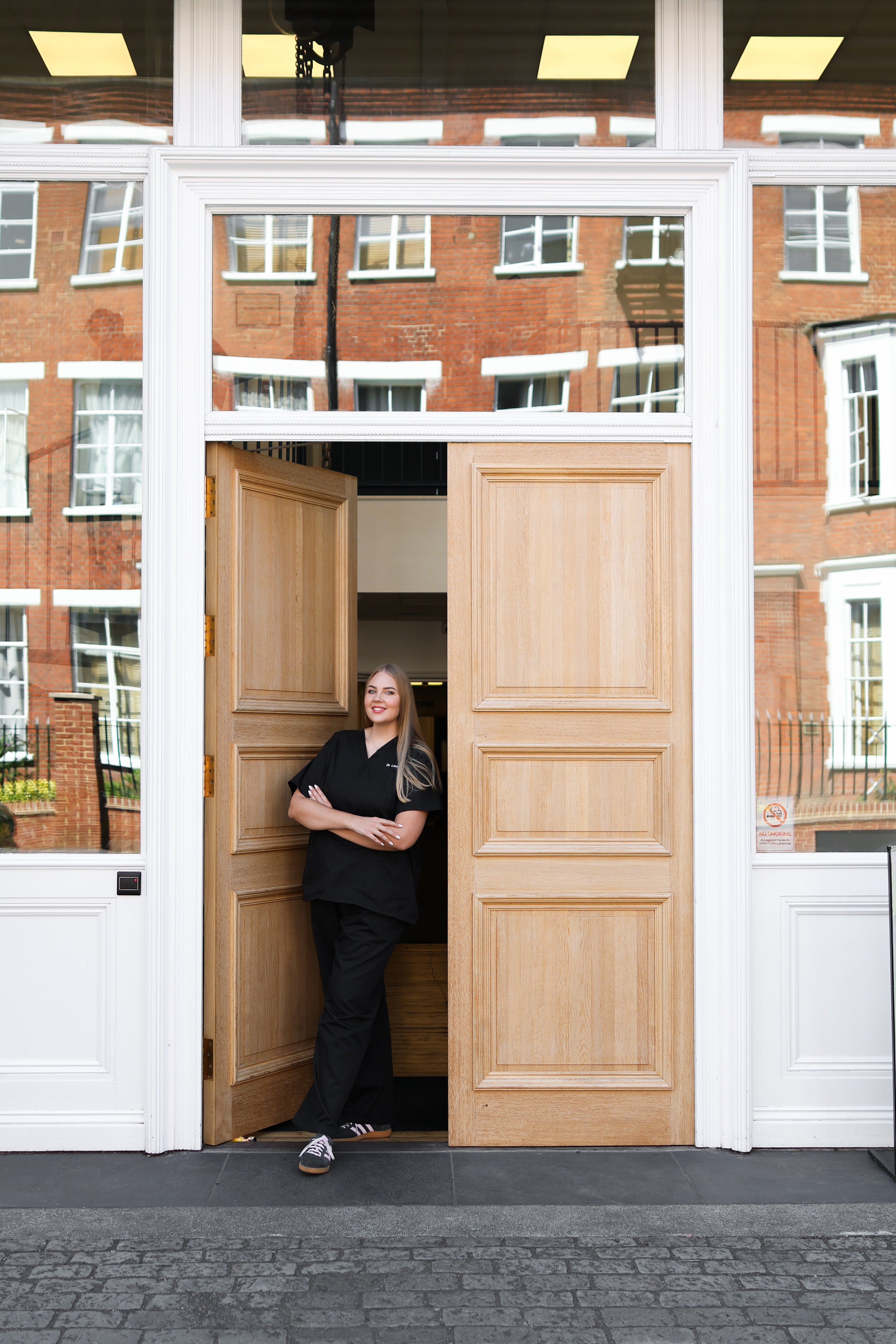Do Temples Swell After Fillers?
Book Your Dermal Filler Appointment with Dr. Laura Geige Today
## The Science Behind Temple Fillers
Temple fillers are a popular cosmetic procedure that involves injecting hyaluronic acid (HA) gel into the temples to add volume and definition.

Hyaluronic acid is a naturally occurring substance in the body that helps to hydrate and plump the skin. When injected into the temples, it creates a fuller appearance and can also lift the cheekbones.
However, swelling is a common side effect of any dermal filler treatment, including temple fillers.
Here’s what you need to know about the science behind temple filler swelling:
How Swelling Occurs:
- **Injection Trauma:** When a needle is inserted into the skin, it causes microscopic tears and inflammation.
- Immune Response: The body’s immune system recognizes the HA gel as a foreign substance and sends inflammatory cells to the injection site.
- **Fluid Retention:** Inflammation leads to increased fluid leakage into the surrounding tissues, causing swelling.
Factors Affecting Swelling:
- Amount of Filler Injected: Larger volumes generally lead to more swelling.
- Injection Technique: Careful placement and spreading of the filler can minimize trauma.
- **Individual Response:** People vary in their sensitivity to inflammation, so some individuals may experience more swelling than others.
- Genetics:** Genetic predisposition can play a role in swelling patterns.

Timeline for Swelling:
Swelling typically starts immediately after the procedure and peaks within 24-72 hours.
It gradually subsides over the following days and weeks.
Some mild residual swelling may last for a few weeks.
Managing Swelling:
- Cold Compresses: Applying cold compresses to the treated area can help reduce inflammation.
- Elevation: Keeping your head elevated while sleeping can minimize fluid buildup.
- **Arnica:** Taking arnica supplements or applying arnica gel topically may have anti-inflammatory effects.
It’s important to follow your practitioner’s instructions carefully after the procedure.
Get Started with Dermal Fillers – Book with Dr. Laura Geige
How Fillers Work
Dermal Filler Ingredients
## Factors Affecting Swell
Dermal fillers are primarily composed of hyaluronic acid (HA), a naturally occurring substance in the body that provides hydration and volume to skin.
However, some fillers may contain additional ingredients, such as:
- Anesthetics: These are often included to minimize discomfort during injection.
- Cross-linking Agents: These substances, like BDDE (butanediol diglycidyl ether) or PEG (polyethylene glycol), create stronger bonds between HA molecules, increasing the filler’s longevity and firmness.
- Stabilizers:**
These help to preserve the filler and prevent degradation.
Swelling after dermal fillers is a common side effect and generally resolves within a few days to a week.
Several factors can influence the extent of swelling:
- Volume Injected: Larger volumes tend to cause more swelling.
- Injection Technique: Experienced injectors minimize trauma to tissues, reducing inflammation.
- Individual Sensitivity: Some people are naturally more prone to swelling than others.
- Area Treated: Certain areas, like the temples, may be more susceptible to swelling due to thinner skin and delicate tissue.
- Lifestyle Factors:**
- Underlying Medical Conditions:**
*
Exercise and strenuous activity can temporarily increase swelling.
*
Alcohol consumption can also contribute to inflammation.
Certain conditions, like diabetes or autoimmune disorders, may influence healing and swelling.
It’s crucial to follow your injector’s post-treatment instructions carefully to minimize swelling and promote proper healing.
This usually involves avoiding strenuous activity, applying ice packs, and staying hydrated.
Placement and Product Type
Individual Healing Response
## Managing Swelling After Temple Fillers
Temple fillers, like any dermal filler injection, can cause swelling as a natural part of the healing process.
Understanding individual healing response patterns and managing swelling effectively is crucial for achieving optimal results after temple fillers.
Here’s a detailed look at how to navigate this aspect:
Individual Healing Response
- Variable Rates: People heal at different paces. Factors influencing this include genetics, age, overall health, and even the specific filler product used.
- Swelling Timeline: Swelling typically peaks within 24-72 hours after injection, gradually subsiding over several days or weeks.
- Variations in Severity: Some individuals experience mild swelling that fades quickly, while others may have more pronounced and prolonged swelling.
Managing Swelling After Temple Fillers
- Ice Application:** Apply a cold compress (ice pack wrapped in a towel) to the treated area for 15-20 minutes at a time, several times daily. This helps constrict blood vessels and reduce inflammation.
- Elevation: Keep your head elevated as much as possible, especially while sleeping, to minimize fluid pooling.
- Compression:** Use gentle pressure with a soft bandage or compression garment if swelling is significant. Consult your injector for guidance on appropriate pressure.
- Hydration: Drink plenty of water to help flush out toxins and support the body’s natural healing processes.
- Avoid Heat:** Stay away from saunas, hot tubs, or prolonged exposure to heat as this can exacerbate swelling.
- Gentle Massage:** Once the initial swelling subsides (usually after a few days), your injector may recommend gentle massage around the temple area to help break up any lingering fluid and promote even filler distribution.
Important Notes:
- Consult Your Injector:** If you experience excessive, persistent, or concerning swelling, contact your injector immediately. They can assess the situation and provide tailored advice or treatment if needed.
- Follow Instructions: Adhere to all post-injection care instructions provided by your injector. This includes avoiding certain activities, medications (especially blood thinners), and products that could irritate the treated area.
Schedule a Dermal Filler Consultation with Dr. Laura Geige Now
Expected Recovery Timeline
### PostProcedure Care Tips
Swelling is a common and normal reaction to any facial injection, including those used for dermal fillers.
Expected *Recovery Timeline* varies depending on several factors, including the type and amount of filler used, individual healing abilities, and the treated area.
Generally, mild swelling peaks within a few days after the procedure and gradually subsides over the following week or two. Most individuals experience significant improvement in swelling within 7-10 days.
Here are some post-procedure care tips to minimize swelling and promote optimal healing:
**Avoid touching or rubbing** the treated area as this can exacerbate inflammation.
**Apply ice packs** wrapped in a towel for 15-20 minutes at a time, several times a day, especially during the first 24 hours.
**Elevate your head** while sleeping to reduce fluid accumulation in the face.
Stay hydrated by drinking plenty of water.
Avoid strenuous activities or anything that may cause excessive sweating for at least a few days post-procedure.
Refrain from consuming alcohol as it can dehydrate the body and prolong swelling.
Follow any specific instructions provided by your injector regarding medications, skincare products, or other post-care measures.
If you experience excessive swelling, bruising, pain, or any signs of infection, contact your injector immediately.
BeyBey Name Divine Magazine Mind Plus Motion Kindra Mann
- The Benefits Of CBD Gummies For Managing Daily Stress And Anxiety - December 5, 2025
- THC Mocktails: Alcohol-Free, Weed-Full Fun - December 4, 2025
- Temple Filler Near Ranmore, Surrey - December 1, 2025
